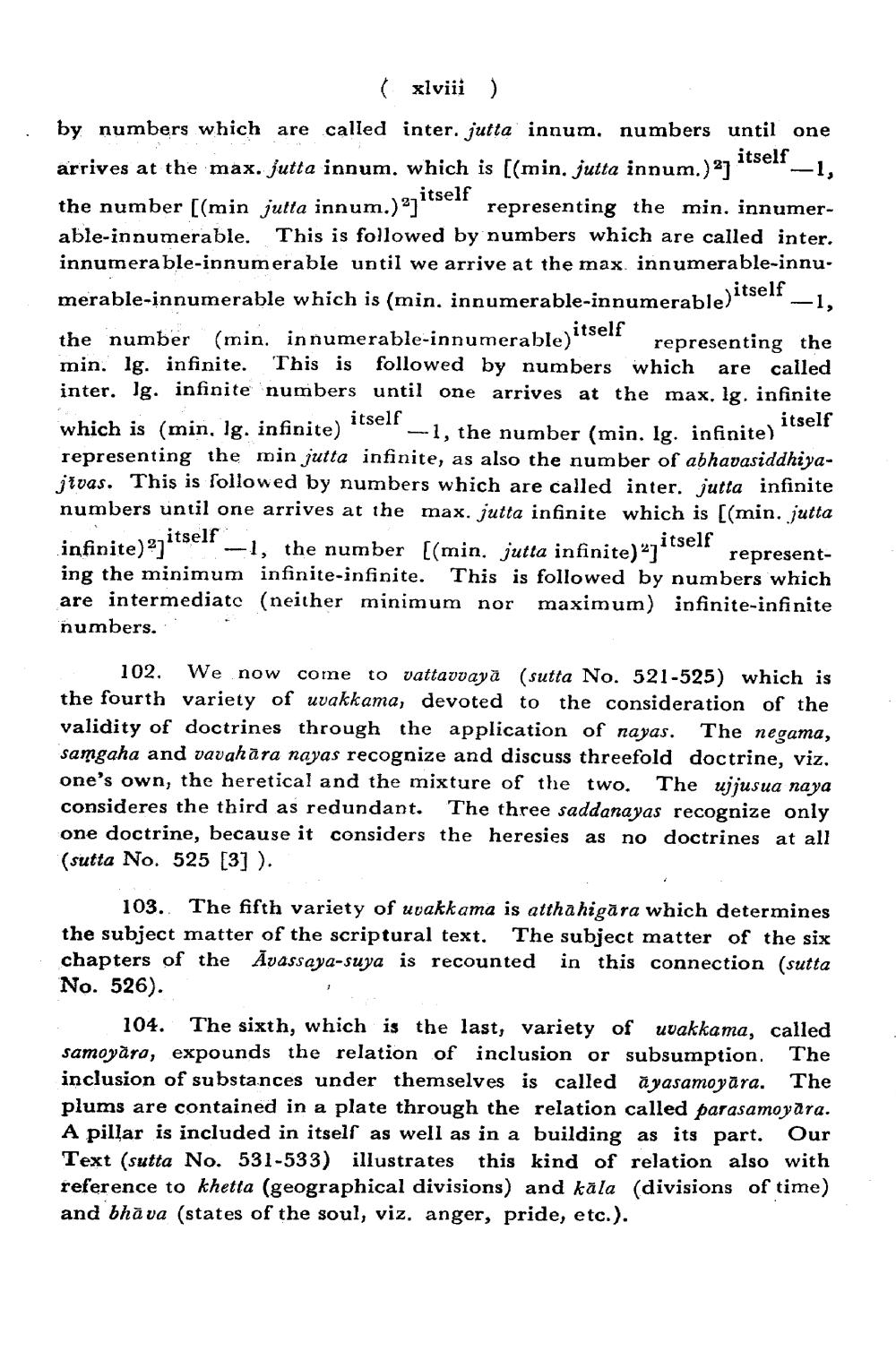________________
( xlviii) by numbers which are called inter. jutta innum. numbers until one itself arrives at the max. jutta innum, which is [(min. jutta innum.)2] -1, itself the number [(min jutta innum.)2] representing the min. innumerable-innumerable. This is followed by numbers which are called inter. innumerable-innumerable until we arrive at the max. innumerable-innuitself merable-innumerable which is (min. innumerable-innumerable)
—1,
itself
the number (min. innumerable-innumerable)' representing the min. lg. infinite. This is followed by numbers which are called inter. lg. infinite numbers until one arrives at the max. lg, infinite itself
itself
which is (min. lg. infinite) -1, the number (min. Ig. infinite) representing the min jutta infinite, as also the number of abhavasiddhiyajivas. This is followed by numbers which are called inter. jutta infinite numbers until one arrives at the max. jutta infinite which is [(min. jutta itself infinite) 27 itse itself -1, the number [(min. jutta infinite)"] representing the minimum infinite-infinite. This is followed by numbers which are intermediate (neither minimum nor maximum) infinite-infinite numbers.
102. We now come to vattavvaya (sutta No. 521-525) which is the fourth variety of uvakkama, devoted to the consideration of the validity of doctrines through the application of nayas. The negama, samgaha and vavahara nayas recognize and discuss threefold doctrine, viz. one's own, the heretical and the mixture of the two. The ujjusua naya consideres the third as redundant. The three saddanayas recognize only one doctrine, because it considers the heresies as no doctrines at all (sutta No. 525 [3] ).
103. The fifth variety of uvakkama is atthahigara which determines the subject matter of the scriptural text. The subject matter of the six chapters of the Avassaya-suya is recounted in this connection (sutta
No. 526).
104. The sixth, which is the last, variety of uvakkama, called samoyāra, expounds the relation of inclusion or subsumption. The inclusion of substances under themselves is called ayasamoyāra. The plums are contained in a plate through the relation called parasamoyāra. A pillar is included in itself as well as in a building as its part. Our Text (sutta No. 531-533) illustrates this kind of relation also with reference to khetta (geographical divisions) and kāla (divisions of time) and bhava (states of the soul, viz. anger, pride, etc.).




